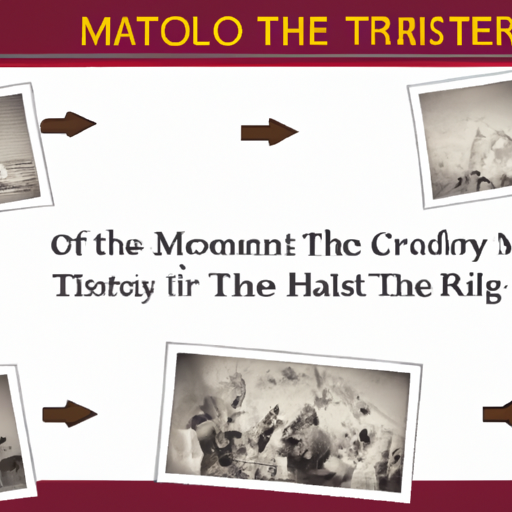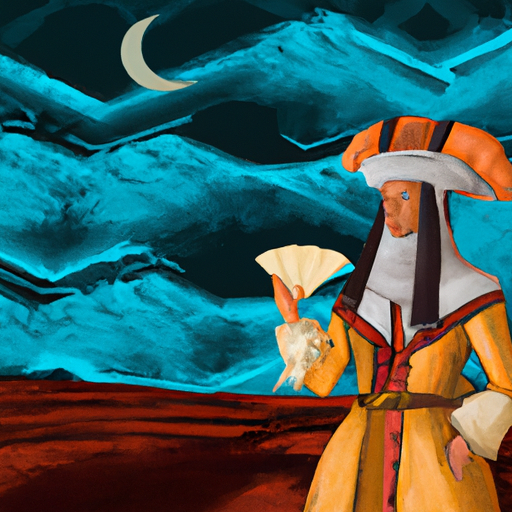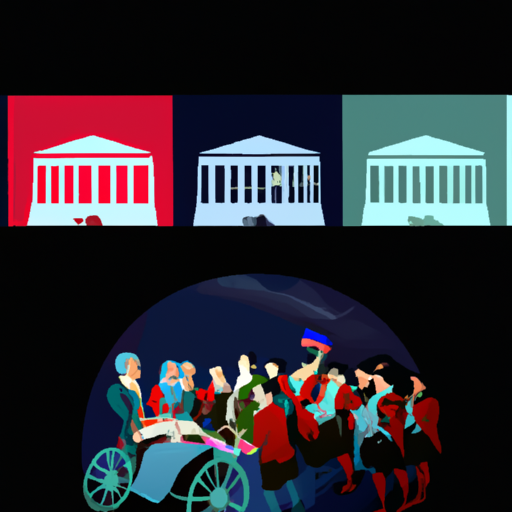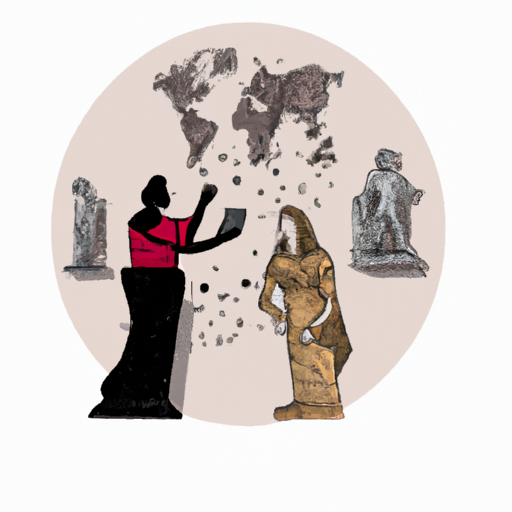A Look into History: The Strongest Ancient Country
Delve deep into the past to uncover which ancient nation reigned supreme. Unearth the answers to this age-old mystery, unlocking a trove of knowledge that has been hidden away for centuries. Investigate the clues and explore the evidence, and you may just find out who held sway in days gone by.

The past is a great unknown, and the secrets of bygone civilizations remain buried deep in history. To uncover them, one must delve into archaeological evidence and historical records. Artifacts, inscriptions, texts, and other sources can provide clues to the rise of each nation as well as their accomplishments. Written accounts from contemporary observers and later historians also offer insight into culture and customs, giving us a better understanding of which ancient nation reigned supreme.
It’s an exciting journey that can take us back in time to explore the lives of long-forgotten peoples. So why not take the plunge? Unearth the answers to this timeless mystery and unlock a wealth of knowledge that has been hidden away for centuries!
.
Introduction

Trying to determine which was the mightiest of all the historic empires across the world is a perplexing query. The Roman Empire, which reigned from the 1st century BC until 476 AD, is largely considered to be one of the most authoritative and influential. Its reign spanned from Britain to North Africa and Germany to Syria, making it one of the largest empires ever created. It was also renowned for its advanced civilization, boasting a formidable military, a wide-reaching legal system, and awe-inspiring engineering accomplishments such as aqueducts and highways. Additionally, there are other contenders for this title that must also be taken into account; China’s Qin Dynasty (221-206 BC), Persia’s Achaemenid Empire (550-330 BC), India’s Mauryan Empire (322-185 BC), and Egypt’s New Kingdom (1550-1070 BC) were all prominent forces in their own right.
– History of the Most Powerful Ancient Empires
The past is filled with remarkable stories of powerful empires that have shaped the world we live in. From the Roman Empire to the Chinese dynasties, these civilizations left an imprint on our current culture, language and politics. Let us take a look at some of the most influential empires and their legacies.
The Roman Empire was a formidable force from 27 BC to 476 AD, ruling over vast territories with an autocratic monarchy. Their engineering feats such as aqueducts and roads, as well as their legal system which formed the basis for many modern legal systems, are still admired today.
The Persian Empire was another great power that spanned from 550 BC to 651 AD and was ruled by Shahanshahs who held absolute power over their subjects. The Persians were renowned for their cultural accomplishments such as literature, art, architecture and science, while also being known for their military might which enabled them to conquer lands stretching from Egypt to India and beyond.
The Chinese dynasties are one of the most famous ancient empires due to their long-lasting influence on Asia and beyond between 221 BC and 1911 AD. They developed paper money and gunpowder, built the Great Wall of China, invented printing techniques and much more.
Finally, there is the Ottoman Empire which rose to prominence between 1299 AD and 1922 AD when it controlled much of Southeast Europe all the way into North Africa and parts of Asia Minor (modern day Turkey). This empire had a major role in spreading Islam throughout its domains with many Islamic monuments still standing today in Istanbul (formerly Constantinople). Furthermore, they were renowned for culinary delights such as kebabs, baklava and Turkish delight which remain popular today!
These four ancient empires have left an indelible mark on history that can be seen in our society’s culture, language, politics and more!
– How Geopolitical Factors Influenced Ancient Country Strength
Throughout the ages, geopolitical elements have been pivotal in bolstering the might of ancient empires. These factors, which encompass physical, economic, and cultural aspects that define a nation’s power, often had an impact on its capacity to expand and protect itself. Thus, it was essential for these bygone states to gain or preserve control over resources such as land, water and trade routes to increase their strength.
The availability of natural resources was a major factor in determining the success of ancient countries. Control over these assets enabled them to construct thriving economies and formidable military forces that could ward off invasion. Moreover, access to rivers provided an advantage in terms of transportation and commerce since they could be used for ferrying goods and people. Furthermore, arable land was vital for planting crops and rearing livestock which supplied sustenance for the population.
The location of a country also played a crucial role in deciding its strength. Nations situated near other powerful entities were more likely to face invasion or subjugation than those located in remote areas. Similarly, coast-based countries had an edge when trading with foreign nations since they could easily transport their wares via sea routes. Plus, ports allowed vessels from overseas lands to dock there and bring new products as well as concepts into the country.
Finally, cultural influences were integral in assessing the potency of ancient countries. Nations with sophisticated religions or philosophies usually boasted strong armies due to their citizens’ allegiance towards their beliefs and leaders. Additionally, cultures that encouraged education enabled their citizens to craft advanced technologies which gave them an edge over adversaries both militarily and economically.
In summing up, geopolitical components like access to natural resources, position relative to other powerful nations and cultural influences all made substantial contributions towards forming the might of ancient countries throughout history. Thanks to these elements some nations managed to outshine their rivals while others faded away into oblivion.
– Historical Milestones of the Strongest Ancient Countries
Throughout the ages, certain ancient countries have left an indelible mark on the world. From Egypt and Persia’s majestic empires to Greece and Rome’s powerful city-states, these civilizations have bequeathed a lasting legacy that still affects us today. Here are some of their most significant historical milestones:
Egypt: One of the oldest cultures in history, Ancient Egypt is renowned for its awe-inspiring monuments such as the Great Pyramid at Giza and the Valley of Kings. It is also famous for being home to one of the earliest written languages, hieroglyphics. The Egyptians were renowned for their engineering prowess which enabled them to construct massive monuments and irrigation systems that helped them thrive in an otherwise arid landscape.
Persia: The Persian Empire was a formidable force in its day, stretching from modern-day Turkey all the way to India. Its immense wealth and military might made it one of the most powerful empires in history. It is also remembered for its cultural contributions like literature and art. Persian rulers were known for their tolerance towards different religions, allowing people from all backgrounds to coexist peacefully within their borders.
Greece: Ancient Greece is often hailed as the birthplace of democracy and Western civilization. Its citizens developed groundbreaking ideas about philosophy, mathematics, science and politics that would shape our world today. Greek city-states were fiercely independent yet often united against common enemies such as Persia or Sparta. The Greeks are even credited with inventing aspects of modern warfare such as siege tactics and hoplite formations.
Rome: The Roman Republic was an expansive empire that spanned much of Europe during its time. It was celebrated for its well-structured government system based on law rather than arbitrary rule. Roman culture had a huge impact on Europe with its architecture, language (Latin) and religion (Christianity). Rome’s military strength allowed it to conquer vast swaths of land while maintaining strong trade relations with other civilizations through roads constructed throughout its territories.
These four great civilizations have shaped our world in countless ways over thousands of years – from inspiring modern democracies to providing us with invaluable knowledge about engineering and mathematics – making them some of the strongest ancient countries ever known!
– The Rise and Fall of the Greatest Ancient Nations
The past of the world is filled with an immense number of great civilizations that have waxed and waned over time. From the Greeks and Romans to the Chinese dynasties, each culture had its own unique narrative. The ascension and decline of these most ancient nations can be seen as a symbol of the ever-shifting character of human society.
Mesopotamia, located in present-day Iraq, was the first documented civilization. It thrived around 3000 BCE and is credited for multiple inventions such as writing and mathematics, as well as a sophisticated governmental system, law, and religion which were influential for centuries to come. After its downfall in 539 BCE, it was supplanted by the Persian Empire until 330 BCE when it was defeated by Alexander the Great’s forces.
Egypt followed shortly after this period, lasting from 3100 BCE until 30 BC when it became part of the Roman Empire. During its peak in power, Egypt was renowned for its impressive engineering achievements including pyramids and monuments such as Karnak Temple. It also had an intricate religious system based on polytheism where numerous gods were worshipped.
The Greeks were another significant nation during this time whose influence can still be felt today in philosophy, literature, art, politics, science, etcetera. Athens rose to one of their most powerful city-states between 800 – 500 BCE prior to being conquered by Sparta in 404 BCE. The Roman Republic succeeded soon after this period lasting from 509 – 27 BC becoming one of the mightiest empires in history at its zenith before eventually fading away due to internal conflicts and barbarian invasions in 476 AD.
Finally we arrive at China which has been home to some of the oldest civilizations on earth dating back more than 5 millennia ago with dynasties like Xia (2070–1600 BC) through Qing (1644–1912). During this era China made many advances in science and technology such as gunpowder while also constructing an extensive system of laws that still affects many countries today. The last dynasty ended with a revolution driven by Sun Yat-sen overthrowing imperial rule in 1911 leading to modern day China being established as a republic shortly thereafter.
Each of these greatest ancient nations left an indelible mark on our world that can still be felt today whether it be through art or philosophy or simply our understanding of history itself. Their rise and fall serve as reminders that all things are
– Examining the Impact of Ancient Country Strength on World History
Investigating the role of historic might in the formation of global societies is fundamental to comprehending how past civilizations have molded today’s world. Ancient countries were typically distinguished by their economic, military, and political clout. This power was employed to sway neighboring areas and expand their reach, thus having a pronounced effect on world history.
The Roman Empire stands out as one such example of an ancient country that had a tremendous impact on world history. Its expansive domain and advanced armed forces enabled it to seize much of Europe, North Africa, and the Middle East. Its affluent economy allowed for the construction of roads, aqueducts, and other infrastructure that connected its territories – creating a unified culture and language which would eventually spread throughout much of Europe and beyond.
China’s Han Dynasty (206 BC to 220 AD) is another illustration of ancient strength which left its mark on world history. During this period China became one of the most powerful empires in Asia due to its superior technology and centralized government structure. The dynasty was responsible for developing trade routes connecting China with Central Asia and India as well as constructing the Great Wall of China which served as protection from outside invaders.
The ramifications of ancient country strength are still visible today in many aspects of life around the globe – from language to architecture, politics to religion – these influences have helped form our modern societies in ways we may not even be aware. By assessing the impact historical might has had on world history we can gain greater insight into how our present-day lives were fashioned by events from centuries ago.
conclusion

It is an enigma to determine which of the olden nations was the strongest. But, four of the most influential and powerful empires in antiquity were Assyrian, Persian, Greek and Roman. All four had far-reaching control and wielded a great deal of sway in their respective parts of the world.
.
Some questions with answers
Q1. What was the strongest ancient country?
A1. The strongest ancient country is widely considered to be the Roman Empire.
Q2. How did the Roman Empire become so powerful?
A2. The Roman Empire became powerful through its strong military, political systems, and religious influence.
Q3. How long did the Roman Empire last?
A3. The Roman Empire lasted for over 500 years, from 27 BC to 476 AD.
Q4. What other ancient civilizations were powerful?
A4. Other powerful ancient civilizations included the Persian Empire, the Chinese Han Dynasty, and the Aztec Empire.
Q5. How has history been affected by these ancient countries?
A5. These ancient countries have had a lasting impact on world history, influencing language, art, culture, politics and much more.





